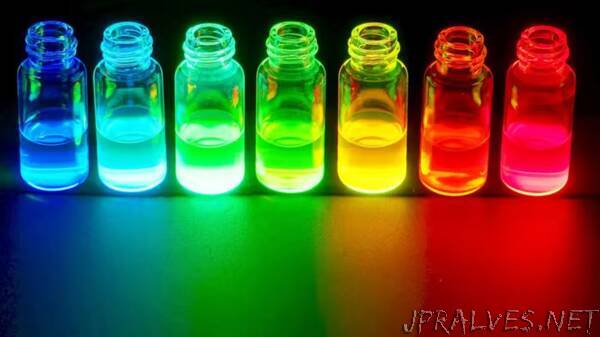
“Canon has developed a material for organic light-emitting diode (OLED) panels that does not use rare metals, Nikkei has learned.
This move comes as the Japanese company aims to reduce its dependence on major rare metal producers such as those in China. Canon plans to commercialize the technology within a few years, paving the way for securing stable production without being affected by geopolitical risks.
The new material is quantum dots (QD), tiny semiconductor particles with a diameter of 1 nanometer. When irradiated with light or injected with an electric current, the particles emit vivid colors.
Other quantum dots are already used for high-end OLED televisions. Samsung Electronics mass-produces quantum dots, but it uses the compound indium phosphide. Indium is a rare metal produced in extremely small quantities, with China being the major source.
Canon’s new material uses lead, which is easily procured from recycled raw materials in “urban mines.” Canon aims to commercialize the material in the mid-2020s by establishing technology for mass production.
According to Statista, a German research firm, China accounted for 59%, or 530 tons, of the world’s indium production in 2022. As many countries hoard natural resources, risks are growing for procuring materials for digital devices and electric vehicles.
Canon uses lead in some of its compounds as a substitute for indium. Lead usually leads to results that are less durable than with indium, but by leveraging its expertise in compounding materials such as toner and ink for office equipment, the company has devised a compound that is as durable as indium.
Lead is easily reusable. About 70% of domestically produced lead comes from recycled sources such as used car batteries. And its cost is far lower than those of rare metals. The material cost of Canon’s quantum dots could be as low as one-hundredth that of Samsung’s.
While conventional OLED televisions use color filters to express the three primary colors of red, blue and green, OLED televisions with quantum dots in ink form printed on glass produce red and green colors that are bright and even when exposed to light. Power consumption is reduced to about one third of conventional screens.
Besides Samsung, companies such as the Sony Group, Chinese consumer electronics giant TCL, and Sharp produce OLED televisions using quantum dots. The estimated domestic price of a 55-inch television with quantum dots is 470,000 yen ($3,300), 100,000 yen more than a regular OLED, and 300,000 yen more than a liquid crystal display television. If the new, less expensive material spreads, it is expected to lower the prices of high-end models.
Research firm Global Information expects the global market for quantum dots to increase to $21.1 billion in 2027, 4.1 times that of 2021. In addition, according to Omdia, a British research firm, the number of televisions equipped with quantum dots is expected to increase more than eight times from 2018 to 22 million units in 2025, accounting for about 8% of the total television market.”
